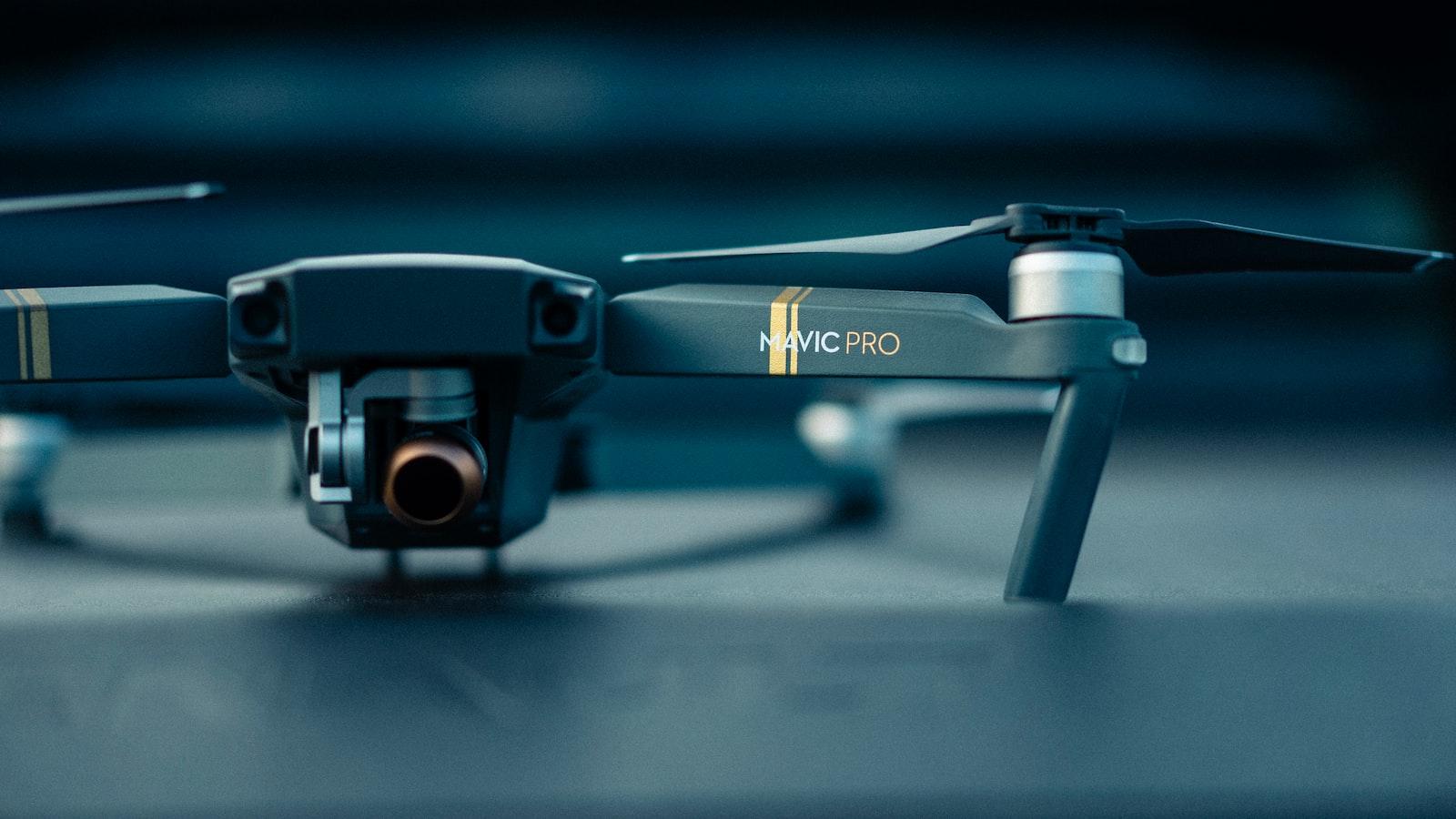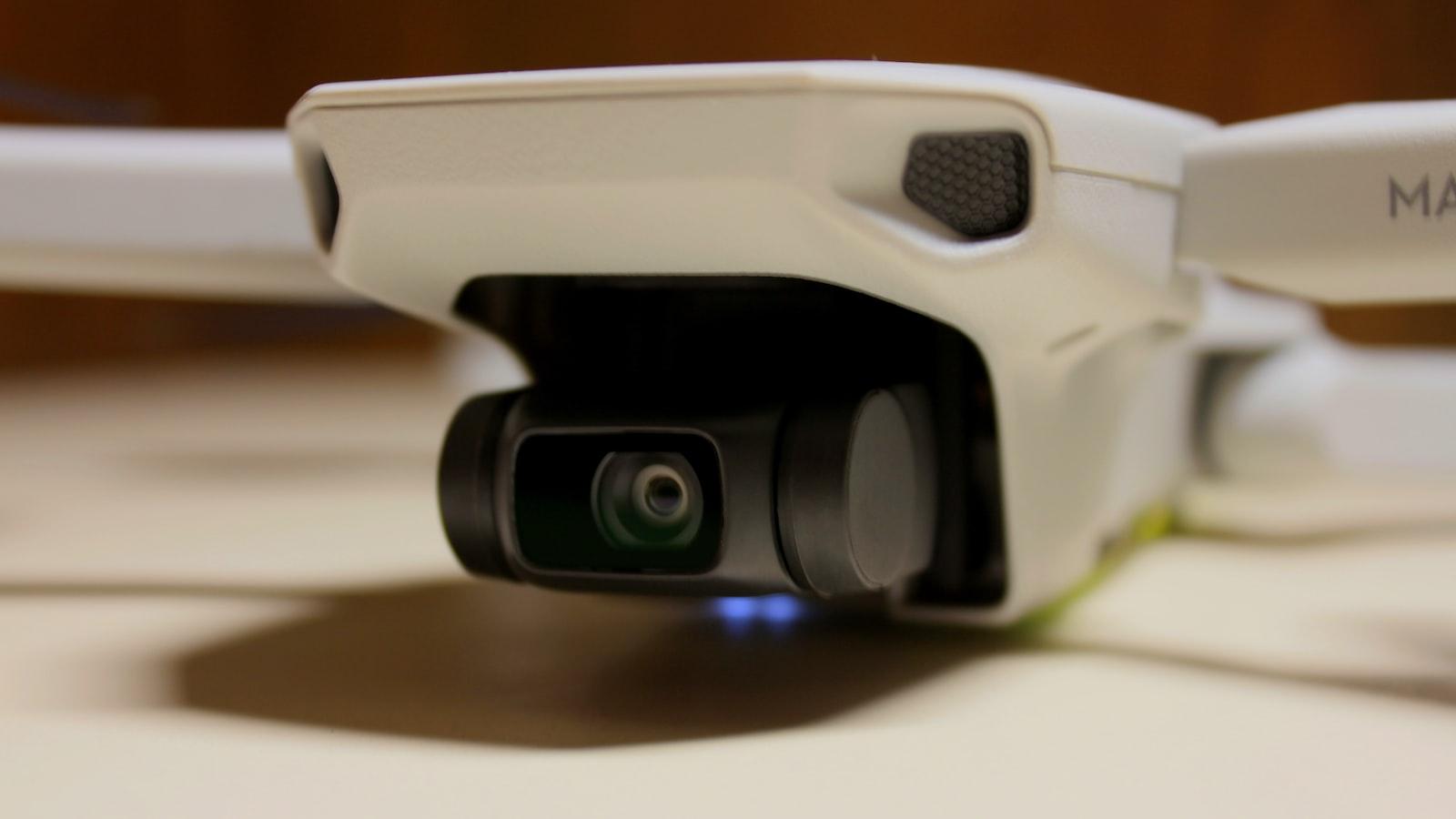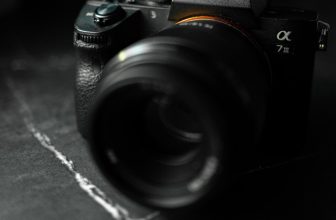
Originally posted 2024-01-12 15:16:51.
In the increasingly digital world we live in, webcams have become an essential tool for communication, both professionally and personally. Whether you’re attending virtual meetings, conducting online interviews, or simply catching up with friends and family through video calls, understanding how to use a webcam effectively is paramount. In this informational article, we will guide you step-by-step on how to set up and utilize a webcam like a pro, ensuring you are well-equipped to optimize your virtual interactions. So, let’s dive in and explore the world of webcams together!
Introduction
Webcams have become an essential tool for communication and entertainment in today’s digital world. Whether you want to video chat with friends and family, work remotely, or stream content, knowing how to use a webcam can greatly enhance your online experience. In this post, we will cover the basics of using a webcam and provide you with some useful tips and tricks to get the most out of your device.
Setting up your webcam is typically a straightforward process. First, ensure that the webcam is properly connected to your computer or laptop. Most webcams use a USB cable for connection, so plug it into an available USB port. Once connected, your computer should recognize the webcam and install any necessary drivers automatically. In some cases, you may need to download and install drivers from the manufacturer’s website.
To make sure your webcam is functioning correctly, open your preferred video chat application or webcam software. You should see a live video feed from your webcam displayed on the screen. If the image is not appearing, check your computer’s settings to ensure that the webcam is selected as the default input device.
When using a webcam for video calls, it’s important to create a suitable environment. Consider the lighting in the room – soft, natural light is often the most flattering. Position yourself so that your face is well-lit and free from shadows. Finding the right angle for the webcam is also crucial. Position it at eye level or slightly above for the most flattering perspective. Avoid placing the webcam too low, as this can result in unflattering angles.
Privacy is a major concern when it comes to webcams. Make sure to cover your webcam when not in use to prevent unauthorized access. You can use a piece of tape, a webcam cover, or even a sticky note to block the camera. Additionally, be cautious when granting webcam access to apps and websites. Only allow access to trusted applications and ensure that you are aware of when the webcam is actively being used.
In conclusion, understanding how to use a webcam effectively can greatly enhance your online experiences. From video calls to streaming content, a properly set up and used webcam can bring you closer to friends, family, and colleagues. By following these basic guidelines, you’ll be well on your way to mastering the art of webcam usage. So grab your webcam, adjust your lighting, and start enjoying the benefits of this versatile device.

Setting up Your Webcam
Using a webcam is a great way to connect with friends, family, and colleagues from the comfort of your own home. Whether you’re attending virtual meetings, recording videos, or video chatting, it’s important to set up your webcam properly to ensure a smooth and enjoyable experience. In this post, we will walk you through the process of , from choosing the right location to troubleshooting common issues.
-
Choose the perfect location: Start by finding the ideal spot for your webcam. Position it on top of your computer monitor or laptop screen for a natural eye-level view. Make sure to place it in a well-lit area, avoiding direct light sources that could cause glare or shadows. A clutter-free background not only looks more professional but also helps prevent distractions.
-
Connect your webcam: Most webcams utilize a USB connection, so locate an available USB port on your computer and plug it in. Allow a few seconds for the drivers to install. If you’re using an external webcam, ensure it’s securely attached and positioned correctly. For built-in webcams on laptops, no further attachment is needed.
-
Check webcam settings: Once connected, open the software or application you plan to use for video calls or recordings. Go to the settings or preferences section and look for the camera option. Here, you can adjust various settings, such as resolution, brightness, and focus, to optimize your webcam’s performance. Experiment with these settings to achieve the best video quality.
-
Test your webcam: It’s essential to test your webcam before any important video conference or recording. Many applications provide a built-in test feature, allowing you to preview your video and check audio settings. If your webcam isn’t functioning correctly, make sure it’s selected as the default camera in your computer’s system preferences. Additionally, try restarting your computer or updating the webcam drivers.
-
Troubleshooting common issues: If you’re encountering problems with your webcam, don’t worry – it’s usually a simple fix. Ensure that other applications using the webcam are closed, as they might cause conflicts. If the video quality is poor, adjust the lighting or clean the lens. If you experience audio issues, check your microphone settings. Restarting your computer can often solve connectivity issues. If these steps don’t resolve the problem, consult the manufacturer’s troubleshooting guide or reach out to their customer support.
Now that you know how to set up and troubleshoot your webcam, you can confidently participate in virtual meetings, connect with loved ones, and create engaging video content. Remember to keep your webcam area tidy and well-lit for a more professional appearance. Enjoy the benefits of this powerful device, and let your creativity and communication skills shine through. Happy webcamming!

Adjusting Webcam Settings
When it comes to using a webcam, it’s important to make sure the settings are just right to ensure clear and high-quality video. Luckily, most webcams come with software that allows you to adjust various settings to meet your specific needs. In this post, we will guide you through the process of for the best possible video experience.
-
Lighting and Exposure:
One of the most crucial aspects of webcam settings is lighting and exposure. To achieve adequate lighting, position yourself in a well-lit room or use additional lighting sources if needed. Adjust the exposure level in your webcam software to ensure that you are properly lit, without appearing too bright or too dark. Finding the perfect balance will enhance the clarity of your video and make you look your best. -
Focus and Sharpness:
Nobody likes a blurry video. To ensure your webcam produces a sharp image, adjust the focus settings. Most webcam software provides an option to manually adjust the focus or enable auto-focus. Experiment with these settings to find the optimal focus level, ensuring that your viewers can clearly see your facial features, expressions, and any objects in the frame. -
White Balance:
Correct white balance is essential for accurate color reproduction. Your webcam software should offer a white balance adjustment feature, allowing you to choose between presets or manually adjust the color temperature. Use this setting to eliminate any unwanted color casts and to achieve lifelike colors in your video. -
Resolution and Frame Rate:
The resolution and frame rate directly impact the quality and smoothness of your webcam’s video output. Adjust the resolution to match your intended usage, whether it’s for video calls or live streaming. Higher resolutions generally result in better video quality, but keep in mind that they may require more bandwidth. Similarly, adjusting the frame rate will determine how many frames are captured per second. Higher frame rates create smoother video, but again, this may require more processing power and bandwidth. -
Additional Settings:
Depending on your webcam software and hardware, you may have access to additional settings to further enhance your video experience. These settings can include zoom, pan, tilt, exposure compensation, and even facial recognition. Explore these options to personalize your webcam usage and make the most out of your video communication.
By adjusting your webcam settings, you can ensure that your video calls, live streams, and online meetings are as professional and visually appealing as possible. Take the time to experiment with different settings and find what works best for you. Remember, a well-adjusted webcam will not only offer a better experience for your viewers, but it will also boost your confidence in front of the camera. So, get ready to shine on your next online encounter with these handy webcam adjustment tips!
Positioning Your Webcam
When it comes to using a webcam, properly positioning it is key to ensuring high-quality video calls and recordings. Whether you’re using it for work meetings or casually chatting with friends and family, here are some tips to help you achieve the best webcam positioning:
1. Find a stable surface
To prevent any shaky or unstable video footage, it’s important to position your webcam on a stable surface. This could be a desk, table, or even a tripod if you have one. Make sure the surface is sturdy and level to avoid any accidental camera movements during your video calls.
2. Adjust the height
at the right height is crucial for maintaining eye contact and framing your face properly. Ideally, the camera lens should be at or slightly above your eye level when you sit comfortably in front of your computer or laptop. Consider using a stack of books or a monitor stand to achieve the desired height.
3. Angle it correctly
Angle your webcam in a way that captures your face and upper body without cutting off any important details. Tilt the camera slightly downward for a flattering angle, while also ensuring that your face is well-lit and clearly visible. Experiment with different angles to find the most flattering and comfortable position for you.
4. Test the lighting
Good lighting is crucial for clear and vibrant video footage. Position yourself in a well-lit room and avoid having a bright light source directly behind you, as it can create a glare or shadow on the camera. Consider using natural light from a window or adding a lamp to improve the overall lighting conditions.
5. Minimize background distractions
To keep the focus on you during video calls, it’s important to minimize background distractions. Choose a clutter-free area or use virtual backgrounds if available. Additionally, make sure to position yourself in front of a neutral or non-distracting background. This will help create a more professional and polished appearance during your video calls.

Troubleshooting Common Issues
While using a webcam can be a great way to communicate and connect with others, it is not uncommon to encounter a few common issues along the way. Don’t worry, though! We’ve got you covered with some troubleshooting tips to help you resolve these issues quickly and get back to enjoying your webcam experience.
1. Webcam Not Detected
If your computer is not recognizing your webcam, try the following solutions:
- Check if the webcam is properly connected to your computer.
- Test the webcam on a different computer or device to see if the issue persists.
- Update your webcam drivers by visiting the manufacturer’s website.
- Ensure that your webcam is not being blocked by any security software or firewall settings.
2. Poor Video Quality
If you’re experiencing blurry or low-quality video, try these troubleshooting steps:
- Make sure that your webcam lens is clean and free from any smudges or dirt.
- Check your internet connection speed as a slow connection can result in poor video quality.
- Adjust the lighting in your environment to improve the clarity of your video.
- If possible, upgrade to a higher resolution webcam for better video quality.
3. Audio Not Working
If you can’t hear any sound during webcam calls, try these troubleshooting tips:
- Check that your speakers or headphones are properly connected to your computer.
- Ensure that the volume on your computer and the video calling software is turned up.
- Try using a different audio device to see if the issue is with your current device.
- Update your sound drivers by visiting the manufacturer’s website.
4. Webcam Freezing or Lagging
If your webcam freezes or lags during video calls, try these solutions:
- Close any unnecessary applications or programs running in the background.
- Make sure that your computer meets the minimum system requirements for your webcam.
- Check if there are any conflicting drivers or software that might be causing the issue.
- Consider upgrading your computer’s hardware, such as RAM or processor, for smoother webcam performance.
5. Privacy and Security Concerns
When using a webcam, it’s important to address privacy and security concerns:
| Protect your privacy | Use a physical webcam cover or disable the webcam when not in use to prevent unauthorized access. |
| Enable security features | Set up a strong password for your webcam software or use encryption if available. |
| Be cautious while sharing | Avoid sharing personal or sensitive information during webcam conversations to protect your privacy. |
With these troubleshooting tips and security measures in mind, you’ll be able to navigate any common issues that may arise while using your webcam and enjoy a seamless webcam experience.
Q&A
Q: What is a webcam and what is its purpose?
A: A webcam is a small camera that captures video and audio information. Its main purpose is to transmit or record live images and sound to a computer or a network.
Q: How do I set up a webcam?
A: To set up a webcam, first, ensure that your computer has an available USB port. Then, plug the webcam into the USB port and wait for your operating system to detect and install the necessary drivers. In some cases, you may need to install specific software provided by the manufacturer as well.
Q: How do I position my webcam correctly?
A: For optimal usage, it is recommended to position your webcam at eye level or slightly above. This ensures a more natural viewing angle during video conferences or calls. Additionally, make sure to position the webcam at a distance that captures your face and upper body, allowing others to clearly see and hear you.
Q: How do I adjust the settings of my webcam?
A: The settings of a webcam can usually be adjusted through the software provided by the manufacturer. Access the software settings and explore options such as video resolution, brightness, contrast, and audio volume to customize your preferences according to your needs.
Q: How can I test my webcam?
A: To test your webcam, open any video conferencing application or software that uses a camera. Go to the application’s settings or preferences and look for the camera option. Select your webcam and click on the “test” or ”preview” button to see if your video and audio are functioning properly.
Q: How can I improve the quality of my webcam’s video feed?
A: To enhance the quality of your webcam’s video feed, ensure that you have sufficient lighting in the room. Adequate lighting reduces graininess and ensures a clearer image. Additionally, adjusting the webcam’s focus and experimenting with different camera angles can also help improve the video quality.
Q: Are there any privacy concerns associated with webcams?
A: Yes, it is important to be cautious about your privacy when using a webcam. Always ensure that your webcam is disconnected when not in use, as unauthorized access to your camera can pose a risk. Furthermore, avoid accepting video calls or opening files from unfamiliar sources to protect your privacy.
Q: Can webcams be used for recording videos?
A: Yes, webcams can be used to record videos. Most webcam software offers the option to record video sequences. However, keep in mind that the video quality may not be as high as dedicated video cameras. If you require higher quality recordings, consider using a dedicated video camera or a smartphone.
Q: What are some common issues with webcams and how can I troubleshoot them?
A: Common issues with webcams include driver problems, software conflicts, or hardware malfunctions. To troubleshoot these issues, try reconnecting the webcam to a different USB port or restarting your computer. Additionally, make sure your webcam’s drivers are up to date by visiting the manufacturer’s website. If the problem persists, you may need to consult technical support or consider replacing your webcam. In conclusion, learning how to use a webcam can greatly enhance your online communication and make virtual interactions more personal and engaging. By following these simple steps, you can ensure that you are utilizing your webcam effectively and efficiently:
-
Choose the right webcam: Consider your needs and preferences before purchasing a webcam, ensuring it is compatible with your device and offers the desired features.
-
Install the webcam: Follow the manufacturer’s instructions and install the necessary drivers and software for your webcam, ensuring seamless compatibility with your operating system.
-
Position your webcam: Opt for a stable surface or mount to position your webcam at an appropriate height and angle, providing a clear and flattering view.
-
Adjust lighting conditions: Adequate lighting significantly affects the image quality. Experiment with various lighting options to achieve a well-lit and professional appearance.
-
Test your audio and video settings: Before any important call or meeting, verify that your webcam’s audio and video settings are properly configured. Test your microphone and speakers to ensure clear audio, and adjust your camera settings for optimal video quality.
-
Protect your privacy: Be mindful of your webcam’s potential security risks. Regularly update your software, use strong passwords, and cover your webcam when not in use to prevent unauthorized access.
By following these guidelines, you can confidently navigate the world of webcam usage and elevate your online presence. Whether it’s for remote work, virtual conferences, or catching up with loved ones, understanding how to use a webcam effectively will undoubtedly improve your overall online experience. So go ahead and embrace the power of webcams to connect and communicate seamlessly in the digital era.






